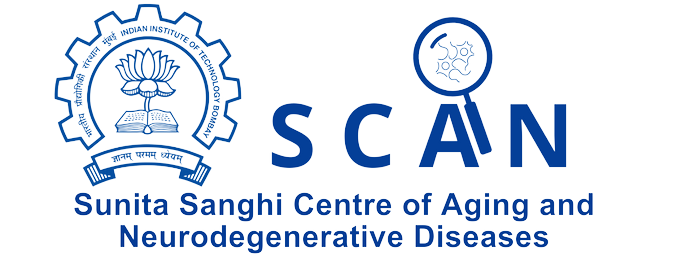Understanding Parkinson’s Disease:
A Beginner's Guide

Research and Future Directions
Research into Parkinson’s Disease is ongoing. Scientists are exploring new ways to understand its mechanism, improving diagnosis, and developing effective treatment strategies to combat the disease. Some of the key areas of research include:
Genetic Research
- Understanding Genetic Mutations: Researchers are studying the genetic mutations associated with familial PD to understand how they contribute to neurodegeneration. This research could lead to new treatments that target these genetic pathways.
- Gene Therapy: Gene therapy is an emerging field that aims to deliver genes directly to the brain to protect or restore dopamine- producing neurons. While still experimental, gene therapy has shown promise in animal models and early clinical trials.


Neuroprotective Therapies
- Developing Neuroprotective Drugs: Scientists are working on developing drugs that can slow or halt the progression of Parkinson’s Disease by protecting neurons from damage. These drugs aim to address the underlying causes of the disease rather than manage the symptoms.
- Stem Cell Research: Stem cell research explores the potential to replace damaged neurons in the brain with healthy ones derived from stem cells. This approach could offer a way to restore lost dopamine production and improve motor function.
Improving Diagnosis
- Biomarkers: Researchers are searching for biomarkers— measurable indicators of the disease—that could allow for earlier and more accurate diagnosis of Parkinson’s Disease. Biomarkers could also help track disease progression and response to treatment. For example, The SAAmplify-αSYN Test is a qualitative test developed to detect misfolded α- synuclein aggregates in cerebrospinal fluid (CSF), to confirm or exclude the synuclein pathology, even at very low concentrations. However, the invasiveness and longer detection time are the major limitations of this test.
- Advanced Imaging Techniques: New imaging techniques, such as advanced MRI, PET, Single Photon Emission Computed Tomography (SPECT)scans, and DAT/TRODAT scans are being developed to provide more detailed views of the brain and detect changes associated with Parkinson’s Disease. These techniques could improve diagnostic accuracy and help monitor the effects of treatment.
In a recent clinical trial, researchers tested a gene therapy approach that involved delivering a gene called GDNF (glial cell line-derived neurotrophic factor) directly to the brain. GDNF is a protein that supports the survival of dopamine- producing neurons. The trial showed that the therapy was safe and well- tolerated, with some participants experiencing improvements in their motor symptoms. While more research is needed, this study highlights the potential of gene therapy as a future treatment for Parkinson’s Disease.
Disclaimer: This example is just for understanding purposes
Latest selected advancements in 2024
Here, we list some of the latest research and advancements in the area of understanding and combating PD using multidimensional approaches. The brief descriptions of these studies are given for a quick glance. For more details, please click the link below.
1. Skin test for the detection of PD and related neurodegenerative disease
A recent study published in the Journal of the American Medical Association (JAMA, 2024) found that a skin biopsy can effectively detect Parkinson’s disease and related disorders. Researchers examined a biomarker known as phosphorylated alpha-synuclein (P-SYN) in skin samples. In individuals diagnosed with Parkinson’s, 92.7% of biopsies showed the presence of P-SYN, whereas only 3.3% of those without a neurodegenerative condition tested positive. Additionally, the levels of P- SYN in the skin samples were linked to the severity of symptoms in participants.
2. Protein that offers protection against brain cell degeneration associated with PD
A recent study led by Dr. Scott Waldman, MD, PhD, explores the role of Guanylyl cyclase C (GUCY2C) in protecting dopamine neurons from degeneration—a key characteristic of Parkinson’s disease—by supporting mitochondrial function. The study found that individuals with Parkinson’s produce more GUCY2C receptors in dopamine neurons. By comparing mice with and without the GUCY2C receptor, researchers observed that its absence led to mitochondrial dysfunction, oxidative stress, and cell death in the brain region affected by Parkinson’s. This indicates that GUCY2C has a neuroprotective function. Additionally, when a neurotoxin known to induce neurodegeneration was introduced to neurons in a petri dish, a molecule that boosts cGMP (a product of GUCY2C activation) helped protect the neurons from mitochondrial damage. Since people with Parkinson’s show increased levels of GUCY2C, the study suggests this may be the body’s natural attempt to shield dopamine neurons from harm.
3. Non-invasive Focused Ultrasound Ablation improved Motor symptoms in PD
A study published in the New England Journal of Medicine found that individuals with Parkinson’s disease experienced improvements in tremors, mobility, and other movement-related symptoms after undergoing a minimally invasive procedure using focused ultrasound. While Deep Brain Stimulation (DBS) remains the standard surgical option for patients who do not respond well to levodopa, it requires implanting tiny wires in the brain to deliver electrical stimulation. In contrast, focused ultrasound is a non-invasive technique that uses high-intensity sound waves, guided by MRI, to target and destroy a specific brain area linked to tremors. A clinical trial evaluating focused ultrasound for improving movement symptoms found that nearly 70% of participants in the treatment group showed significant improvement after three months, compared to 32% in the control group who did not receive the procedure. Additionally, about 66% of those who initially benefited from focused ultrasound maintained their positive response a year later.
4. Plastic Waste Contaminants increases the risk for Parkinson’s disease
A study published in Science Advances suggests that tiny plastic particles, formed from the breakdown of plastics, could be an environmental factor contributing to Parkinson’s disease.
Researchers found that nanoplastics triggered or accelerated α-synuclein clumping in three different models: test tubes, brain cells cultured in a petri dish, and mouse brains. The study identified a specific region in the α-synuclein protein where polystyrene nanoparticles interact. Additionally, brain tissue samples from individuals with Lewy body dementia showed traces of polystyrene, indicating that plastic nanoparticles may be present in human brains and could play a role in Parkinson’s disease development.
5. Personalized Deep Brain Stimulation (DBS)
A recent study introduced adaptive DBS, a novel approach that could further personalize deep brain stimulation (DBS) therapy for individuals with Parkinson’s disease. This method was evaluated in a small clinical trial involving four participants, with findings published in Nature Medicine. In this trial, participants underwent adaptive DBS that provided individualized stimulation to alleviate symptoms. All four participants experienced close to 50% reduction in time spent with their most troublesome symptom when adaptive DBS was active. Moreover, the treatment did not worsen any other Parkinson’s disease-related symptoms. Adaptive DBS showed promising results compared to the conventional DBS.
6. Molecular Profiling of Identified Unique Neuron Cluster in Parkinson’s Disease Brain
Parkinson’s disease is mainly defined by the degeneration of dopamine- producing neurons in the substantia nigra. However, whether other cell types are also affected remains uncertain. A recent study published in Science Advances identified a previously unrecognized neuron type linked to Parkinson’s. Researchers created a comprehensive “atlas of gene expression” by analyzing which genes were active or inactive across hundreds of thousands of cells in the substantia nigra. These findings could provide deeper insights into the disease and potentially inform the development of new treatments.
7. Screening for Depression Can Improve Parkinson’s Care
Although the symptoms of Parkinson’s disease are commonly known to be associated with movement, non-motor symptoms like depression are often overlooked and untreated. Research indicates that up to half of Parkinson’s patients experience depression at some stage, significantly affecting their quality of life. Despite this, many never receive appropriate treatment or therapy. To address this gap, improving depression screening and treatment is crucial. A recent study found that implementing a brief, five-minute questionnaire—the 15-question Geriatric Depression Scale (GDS-15)—can enhance depression detection and follow-up care in Parkinson’s patients, enabling broader and more effective screening efforts.
8. New Continuous Pump Medication for Parkinson’s Disease
PRODUODOPA, a newly developed Parkinson’s drug, is administered continuously through a pump, much like insulin pumps used for diabetes management. Clinical trials in Europe suggest it could be a viable option for individuals experiencing medication wear-off or dyskinesia. By delivering the drug in a controlled manner, the pump may also help reduce daily pill intake. While most side effects were mild, a Phase III clinical trial reported that 23% of participants discontinued use, primarily due to infusion site complications such as swelling, pain, or infection.
9. Wearable sensors to track the Symptoms of Parkinson’s Disease
Given the significant variability of symptoms between patients and the fluctuations of symptoms within the same patient, innovative tools are essential for tracking disease progression. Advancements in wearable technology have led to devices capable of monitoring Parkinson’s symptoms, such as motor fluctuations and dyskinesia that are being used by patients in Europe.
These sensors provide continuous, real-time data, aiding in personalized treatment adjustments and better disease management.
10. Portable symptom monitoring devices for tracking Symptoms of Parkinson’s Disease
In Parkinson’s disease, emergent tremor differs from action tremor as it arises during sustained postures or movements. During finger-tapping tasks, this tremor can affect the clinical assessment of bradykinesia. Currently, no reliable method exists to isolate emergent tremors and assess primary motor symptoms solely through voluntary movements. Stanford Medicine researchers investigated whether tremors occurring during repetitive alternating finger tapping (RAFT) on a quantitative digitography (QDG) device could be accurately identified and differentiated from intentional tapping.

Conclusion and References
Conclusion
Parkinson’s Disease is a complex condition impacting millions globally, including an increasing number in India. Although no cure currently exists, progress in research, treatment, and support services enables individuals to live fulfilling lives. Effective disease management relies on early diagnosis, a well- rounded treatment plan, and a strong support system. Ongoing research continues to shed light on Parkinson’s, offering hope for improved treatments and, ultimately, a cure.
References
- Dorsey ER, Constantinescu R, Thompson JP, Biglan KM, Holloway RG, Kieburtz K, Marshall FJ, Ravina BM, Schifitto G, Siderowf A, Tanner CM. Projected number of people with Parkinson disease in the most populous nations, 2005 through 2030. Neurology. 2007 Jan 30;68(5):384-6. doi: 10.1212/01.wnl.0000247740.47667.03. Epub 2006 Nov 2. PMID: 17082464.
- India State-Level Disease Burden Initiative Neurological Disorders Collaborators. The burden of neurological disorders across the states of India: the Global Burden of Disease Study 1990-2019. Lancet Glob Health. 2021 Aug;9(8):e1129-e1144. doi: 10.1016/S2214-109X(21)00164-9. Epub 2021 Jul 14. PMID: 34273302; PMCID: PMC8295043.
- Mahlknecht P, Seppi K, Poewe W. The Concept of Prodromal Parkinson’s Disease. J Parkinsons Dis. 2015;5(4):681-97. doi: 10.3233/JPD-150685. PMID: 26485429; PMCID: PMC4927924.
- National Institute of Neurological Disorders and Stroke. (2023). Parkinson’s Disease: Challenges, Progress, and Promise.
- Parkinson’s Foundation. (2023). Understanding Parkinson’s: A Comprehensive Guide.
- The Michael J. Fox Foundation for Parkinson’s Research. (2023). Research and Progress in Parkinson’s Disease.
- Indian Academy of Neurology. (2022). Parkinson’s Disease in India: Epidemiology, Management, and Future Directions.
- Kalia, L. V., & Lang, A. E. (2015). Parkinson’s Disease. The Lancet, 386(9996), 896-912.
- Parkinson’s Foundation. (2024). Top Parkinson’s Science News Articles of 2024
(https://www.parkinson.org/blog/science-news/2024-top-science-news).
Parkinson’s Foundation. 2024 Top Science News. [Internet]. 2024 [cited 2025 Jan 8] - Amprion’s SAAmplify-aSYN test: https://www.ampriondx.com/patients. [cited 2025 Jan 8].
- Sixel-Döring F, Zimmermann J, Wegener A, Mollenhauer B, Trenkwalder C. The Evolution of REM Sleep Behavior Disorder in Early Parkinson Disease. Sleep. 2016 Sep 1;39(9):1737-42. doi: 10.5665/sleep.6102. PMID: 27306265; PMCID: PMC4989262.

